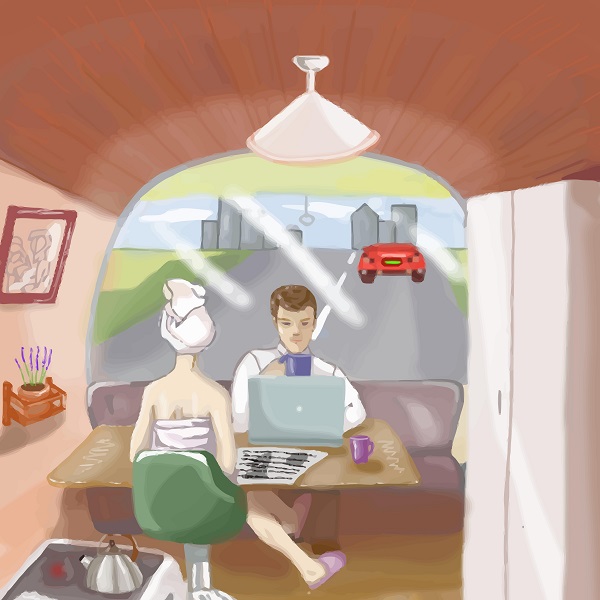Self-driving mobile homes: how driverless cars will change the property market

Autonomous vehicles are already a reality. Driverless taxis already exist in Pittsburgh, San Francisco and Singapore. An unmanned truck has made its first delivery in Colorado, while, in London, an autonomous minibus has been successfully tested.
BMW, Ford, General Motors, Toyota and Volkswagen promise to introduce
What autonomous mobile homes will be like
The first mobile homes appeared in the 1950s and today the United States alone sells over 40,000 of them annually. These vehicles look like buses or trucks on the outside but like houses on the inside, with kitchens, living rooms, bedrooms and bathrooms.
Nowadays, motorhomes in the US are offered at prices ranging from
In the future, mobile homes will be equipped with autonomous control systems. in addition, buyers will be able to purchase devices separately to equip previous generation motorhomes with autonomous capabilities. According to Quartz,
Even today,
- internet and satellite communication capabilities;
- good suspension to offer the smoothest ride possible;
- maximum sound proofing;
- solar panels and electric drives: motorhomes will run on solar energy and electricity, increasing demand for electric vehicle charging stations.
The interior design of the vehicle will probably change too: as there will be no need for a driver, the space in the front part of the car will be free. Overall, mobile homes will become more spacious and ergonomic.
How this will affect people's lifestyles and the residential real estate market
Thanks
1. Commuting
Imagine that, in the evening, you have a barbecue in the forest far out of town, at night, you fall asleep outdoors, under billions of stars, and when you wake up in the morning, your mobile home is already standing in traffic on its way to your office. You are having breakfast while the vehicle is running, and by the time you have had a shower and got dressed, it drops you off at the office door and you come to work beaming. In the evening, the mobile home picks you up from work, and you go back to the countryside. En route you relax while having supper, watching a film or reading a book.
Thanks
2. Travelling
Now imagine that you are a freelancer travelling in your mobile home across America. the vehicle drives itself whilst you are working. You arrive at an interesting place, step out, enjoy beautiful views, visit cafes and museums and continue your way. Over six months you journey across the entire continent without wasting any time driving.
Another option is going on family holidays in your mobile home: setting off in the evening, sleeping
Andrew M. Ryan, author and blogger, calculated that a tourist would have to rent 30 hotel rooms and pay 60 restaurant bills to see the main landmarks of 48 American states. a usual American road trip in a car costs $6,212, whereas
3. Flashmobs and festivals
Several hundred mobile households may agree to meet somewhere in Nevada or Arizona via social networks and organise an enormous party. Alternatively, a hundred of these vehicles could have a massive barbecue on the outskirts of the city where a travelling restaurant has stopped. Other cars of this type may be turned into portable,
People will certainly continue living in conventional houses and flats, but a significant proportion of young people may share the desire to live
Purchasing mobile homes on credit will be popular too. The absence of a property tax in the USA for vehicles that remain on wheels and cannot be converted into static trailer homes will become a stimulus.
George Kachmazov, managing partner at Tranio
Originally published on remonline.com
We will send you a content digest not more than once a week